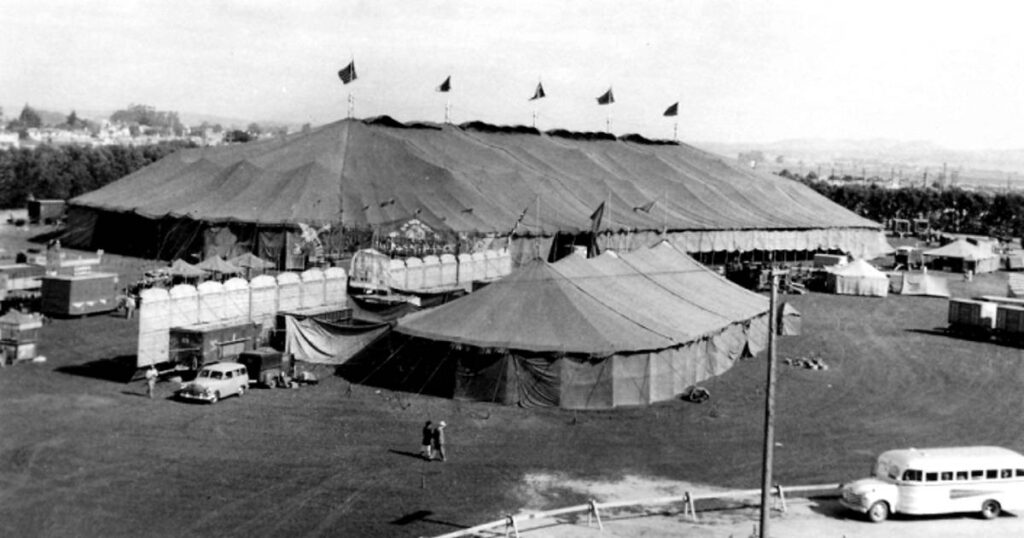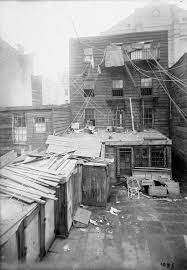
John & Mable’s Home
On Wednesday, Debbie and I toured the Ringling Museum and mansion. Until we were in Sarasota, Florida, I had no idea that John Ringling moved the circus to Sarasota every year for the winter. Now the grounds that used to be home to the circus in the winter have become a museum. I remember going to the circus a couple of times with my parents and seeing “The Greatest Show on Earth” at the Phoenix Coliseum (the last show in the Big Top was in 1956). I remember it was an incredible show, and it was impossible to take in everything that was going on in all three rings. I remember being astounded by the acrobats, the trained animals, and the human cannonball as he was shot out of the cannon.

The Big Top
We were at the museum all day and learned that the circus reached its height of popularity between 1890 and sometime in the 1930s. Before touring the museum, I had never thought about the logistics of moving such a large and complicated show by rail, setting up the tents, and maintaining the health of the exotic animals. According to the information in the museum, there were very few zoos in the US at the end of the 19th and beginning of the 20th century, and the circus was the only opportunity that people had to see elephants, lions, bears, and several other creatures which are featured in most US zoos today. When the circus came to town, schools and businesses would close for the day so that everyone could see the show

Show Tigers
.
SOME THINGS HAVEN’T CHANGED
Going through the museum was like stepping back in time to another world. Although it was very interesting, I found myself feeling sorry for
the wild animals that spent most of their life in very small cages. I also felt bad for the many performers and workers who worked incredibly long hours, with virtually no opportunity to rest. I could not help feeling bad for the people who were part of the sideshow simply because they had an unusual appearance or were somehow different. They were put on stage so people could just stare at them. Although the circus was entertaining, and made some people very rich, for most of the people, and for all of the animals, the lifestyle was awful by modern standards.
As we left the museum, I thought of how such awful treatment of people continues today. People in Gaza, Yemen, Ukraine, North Korea, Somalia, and Burundi, to name only a few places, are treated so poorly it is almost impossible to understand. Of course, you don’t need to travel to another country. On the Pine Ridge Indian Reservation I saw a kind of poverty and desperation that I didn’t know existed in the US. I live a very privileged life where most of the time this extreme poverty and mistreatment of people is encountered only when visiting a museum, on a missions trips, or while watching television. It isn’t part of my daiy reality.

SOME THINGS HAVE CHANGED
Recently I have listened to two different books that described life in cities in the middle of the 19th century, and the conditions in which people were forced to live were horrific. For the poor masses, it is hard to understand how they were able to survive. But even those who were rich could not escape the noise, filth, and disease that were part of normal life. Dinesh D’Souza observes that, “In the last two hundred years the great achievement of the modern West was to create a middle class, allowing the common man to escape poverty and live in relative comfort.”* By historical standards, even Americans who subsist at the poverty line, as defined by the US government, live better than most wealthy Americans did in the 19th Century.
GRATEFUL, NOT ENTITLED
These observations cause me to be incredibly grateful. Grateful for our home, our cars, washing machines, indoor plumbing, and a million other conveniences that are part of my normal life. Grateful that I live in the United States in the 21st century.
I am also grateful for my relationship with Jesus. There are a lot of people who enjoy all the privileges that I have and are miserable. It is my relationship with the LORD that gives me perspective and helps me see the blessings that I have. It is the Christian faith that helps me to make hard decisions that lead to a great life, and the perspective to enjoy that life.
Of course, you don’t have to be a Christian to be continually grateful and enjoy all the modern conveniences that are part of living in the United States in the 21st century. There are plenty of non-believers who are grateful and realize the profound privileges they enjoy. And there are a lot of Christians who don’t seem very happy; they seem discontent and just want more. I hear a lot of talk about how the younger generations feel entitled, but I have met a lot of older people my age who feel they are entitled to more than they have. The feeling that you are entitled is not limited to young people.
REJOICING IN OUR BLESSINGS
I am often reminded, through reading of scripture and things I think, say, and do, that I am a sinner and deserve the wrath of God. I think about the wealth and conveniences that I enjoy and know that men and women who were part of the circus worked much harder and didn’t enjoy a fraction of the conveniences that I enjoy every day. I also think about the people who live in much of the world today and must endure war, extreme poverty, and hunger.
My life is not perfect, and some things are hard, but I find it easy to rejoice in the Lord. Going through the museum was entertaining, but the experience also allowed me to ponder how incredibly fortunate I am and that it is all by God’s grace, not my hard work.
I pray that today you will find time to ponder the blessings of God in your life and rejoice. There is much in our culture that would have us focus on what we don’t have, but it only takes a bit of reflection to see that we are indeed blessed and privileged people.
_________________________________________
*D’Souza, Dinesh, The Virtue of Prosperity, p.16.
